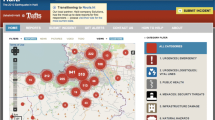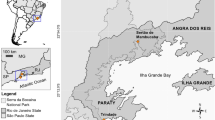Abstract
In this chapter we analyse the role played by maps in communicating and deploying territoriality in the context of a mining conflict. The analysis follows the recent conflict and social movement against mining in Wirikuta, an area in northern Mexico considered sacred land by the Huichol (wixarika) indigenous people. We base our analysis on Robert Sack’s definition of territoriality as ‘an attempt by an individual or group to affect, influence, or control people, phenomena, and relationships, by delimiting and asserting control over a geographic area’ and specifically on how this attempt is communicated, cartographically and otherwise. A central element of this communication is the ‘official’ and pre-existing map of the Wirikuta natural protected area, established some 15 years prior to the beginning of the conflict. Actors on both sides of the conflict built their arguments on this map to promote their interests—to enforce their territoriality. Thus, two conflicting territorialities are based on a single agreed-upon cartographic representation of the disputed land. This is in contrast to other land conflicts, where so-called ‘counter-maps’ are produced by actors on either side of the conflict as a tool to challenge or question the legitimacy of the other’s map and claims on the land. This case illustrates both the advantages and disadvantages of the use of a single ‘authoritative’ map whose legitimacy is mutually acknowledged by opposing parties in a land conflict.
Access this chapter
Tax calculation will be finalised at checkout
Purchases are for personal use only
Similar content being viewed by others
Notes
- 1.
- 2.
In New Zealand, Maori communities developed GIS functionalities so that their confidential and sacred geographies of places and sites (GIS layers) could remain invisible or with controlled access (Harmsworth 1998).
References
Autoridades Tradicionales y Agrarias del Pueblo Wixárika (2010) ‘Pronunciamiento en defensa de Wirikuta’ (public statement). http://frenteendefensadewirikuta.org/wirikuta/?page_id=27. Accessed 23 Sep 2010
Barabas AM (2014) La territorialidad indígena en el México contemporáneo. Chungara, Revista De Antropología Chilena 46(3):437–452
Basso KH (1996) Wisdom sits in places: landscape and language among the Western Apache. University of New Mexico Press, Albuquerque NM
Boni A, Garibay C, McCall MK (2015) Sustainable mining, indigenous rights and conservation: conflict and discourse in Wirikuta/Catorce, San Luis Potosi, Mexico. GeoJournal 80:759–780. https://doi.org/10.1007/s10708-014-9593-3
Caballero J (2012) En defensa de Wirikuta, 60 mil cantaron en el Foro Sol. La Jornada, p 34. 27 de mayo de 2012
Carta al presidente Calderón (2011) (open letter signed by representatives of Huichol communities). http://frenteendefensadewirikuta.org/wirikuta/?p=1757. Accessed 23 Oct 2011
CONANP (Comisión Nacional de Áreas Naturales Protegidas) (2012a) Proyecto de decreto: Reserva de la Biósfera Wirikuta. (Draft decree: 22 October 2012). www.conanp.gob.mx/contenido/pdf/proyecto_Decreto_RB_Wirikuta_22oct2012.pdf. Accessed 14 March 2014
CONANP (Comisión Nacional de Áreas Naturales Protegidas) (2012b) Estudio previo justificativo para el establecimiento del área natural protegida Reserva de la Biósfera ‘‘Wirikuta’’ en el estado de San Luis Potosí.Comisión Nacional de Áreas Naturales Protegidas, Mexico City. www.conanp.gob.mx/anp/consulta/EPJ%20Wirikuta_%2012oct%20polign%20194%20mil%20csi.pdf
CRWDW (Consejo Regional Wixárika por la Defensa de Wirikuta) (2013) ‘Segunda carta urgente al presidente de México, los pueblos y gobiernos del mundo’ (public letter to the President of the Republic). Accessed http://frenteendefensadewirikuta.org/wirikuta/?p=3665. Accessed 8 Feb 2013
De la Cadena M (2010) Indigenous cosmopolitics in the Andes: conceptual reflections beyond ‘politics.’ Cult Anthropol 25(2):334–370
De la Cadena M (2015) Earth beings: ecologies of practice across Andean worlds. Duke University Press, Durham NC
Elden S (2010) Land, terrain, territory. Prog Hum Geogr 34(6):799–817
Enciso A (2012) Ordenan a mineras suspender actividades en la zona sagrada huichol de Wirikuta. La Jornada, p 41. Accessed 28 Feb 2012
Escobar A (2016) Thinking-feeling with the Earth: territorial struggles and the ontological dimension of the epistemologies of the South. AIBR. Revista De Antropología Iberoamericana 11(1):11–32
Ferrer M (2012) Cientos de wixaritari hablaron toda la madrugada con sus dioses en el cerro. La Jornada, 8 de febrero de 2012, p. 42.
FDW (Frente en Defensa de Wirikuta) (2012a) Consideraciones acerca de las Convenciones sobre la Protección del Patrimonio Cultural y Natural, y la de Salvaguarda del Patrimonio Cultural Inmaterial de la UNESCO (public statement). http://frenteendefensadewirikuta.org/wirikuta/?p=2582. Accessed 20 March 2012
FDW (Frente en Defensa de Wirikuta) (2012b) La creación de la Reserva Minera Nacional no resuelve el problema de las concesiones mineras y agroindustriales en Wirikuta (web post). http://frenteendefensadewirikuta.org/wirikuta/?p=3228
FDW (Frente en Defensa de Wirikuta) (2012c) Posicionamiento sobre el estudio técnico justificativo para la creación de la reserva de la biósfera de Wirikuta y su proyecto de decreto (online document). http://frenteendefensadewirikuta.org/wirikuta/?p=3530. Accessed 3 Nov 2012
Gámez M (ed) (2015) Minería y capital transnacional sobre un territorio en riesgo. Análisis interdisciplinario sobre el sitio sagrado natural de Wirikuta. El Colegio de San Luis, San Luis Potosí
Gutiérrez A (2002) La peregrinación a Wirikuta: El gran rito de paso de los huicholes. Instituto Nacional de Antropología e Historia y Universidad de Guadalajara, Cd, de México y Guadalajara
Guzmán M, Kindle O (2016) Cosmopolítica versus etnonacionalismo. Conflictos en torno a usos rituales del espacio en Wirikuta. Relaciones Estudios de Historia y Sociedad. 152:217–265. http://www.revistarelaciones.com/index.php/relaciones/article/view/REHS15208
Harley JB (1992) Reconstructing the map. In: Barnes TJ, Duncan JS (eds) (1992) Writing worlds: Discourse, text and metaphor in the representation of landscape. Routledge, London, pp 231–247
Harmsworth G (1998) Indigenous values and GIS: a method and a framework. Indigenous Knowl Dev Monitor 6(3):3–7. http://www.landcareresearch.co.nz/research/social/ikdmpap.asp
Harvey F, Chrisman N (1998) Boundary objects and the social construction of GIS technology. Environ Plan A 30(9):1683–1694
INEGI (Instituto Nacional de Estadística y Geografía) (2009) Perfil sociodemográfico de la población que habla lengua indígena. Instituto Nacional de Estadística y Geografía, Aguascalientes
Liffman P (2005) Fuegos, guías y raíces: Estructuras cosmológicas y procesos históricos en la territorialidad huichol. Relaciones 101:53–79
Liffman P (2011) Huichol territory and the Mexican nation: indigenous ritual, land conflict, and sovereignty claims. University of Arizona Press, Tucson, AR
Liffman P (2012) Wirikuta: minas, indígenas y medios masivos’ (entrada de blog) en Con-ciencia (blog). http://blogs.eluniversal.com.mx/weblogs_detalle16846.html. Accessed 7 Aug 2012
McCall MK (2021) Participatory mapping and PGIS: secerning facts and values, representation and representativity. IJEPR Int J E-Planning Res 10(3):105–123
Medellin P (ed) (2008) Plan de manejo. Área natural protegida sitio sagrado natural ‘‘Huiricuta y la ruta histórico-cultural del pueblo huichol’’. Gobierno del Estado de San Luis Potosí, San Luis Potosí
Otegui M (2003) Wirikuta: The Wixarika/Huichol sacred natural site in the Chihuahuan Desert, San Luis Potosi, Mexico. In: Harmon D (ed) The full value of parks: from economics to the intangible. Rowman & Littlefield, Lanham MD, pp 295–310
Pearce MW, Louis RP (2008) Mapping indigenous depth of place. Am Indian Cult Res J 32(3):107–126
Poder Ejecutivo del estado de San Luis Potosí (1994) Decreto administrativo que declara sitio de patrimonio histórico, cultural y zona de conservación ecológica del grupo étnico Wirrarika, los lugares sagrados y la ruta histórico cultural ubicados en los municipios e Villa de Ramos, Charcas y Catorce del Estado. Periódico official. Accessed 22 Sep 1994
Poder Ejecutivo del estado de San Luis Potosí (2000) Decreto. Periódico official. Accessed 22 Sep 1994
Poiré A (2012) Palabras del secretario de gobernación durante el evento de preservación y protección de los sitios sagrados del pueblo [sic] de Wirikuta’ (speech transcript). http://www.presidencia.gob.mx/2012/05/palabras-del-secretario-de-gobernacion-durante-el-evento-de-preservacion-y-proteccion-de-los-sitios-sagrados-del-pueblo-de-wirikuta/. Accessed 24 May 2012
Rambaldi G (2005) Who owns the map legend? URISA J 17(1):5–13. http://www.urisa.org/Journal/JrnlContents17-1.htm
Rojas B (1993) Los huicholes en la historia. Centro de Estudios Mexicanos y Centroamericanos/El Colegio de Michoacán/Instituto Nacional Indigenista, Cd. de México
Rundstrom RA (1995) GIS, indigenous peoples and epistemological diversity. Cartography & GIS 22(1):45–57
Sack R (1986) Human territoriality. Cambridge University Press, London
Sandoval López MF, Robertsdotter A, Paredes M (2017) Space, power, and locality: the contemporary use of Territorio in Latin American geography. J Lat Am Geogr 16(1):43–67
SEMARNAT (Secretaría de Medio Ambiente y Recursos Naturales) (2000) Reglamento de la Ley General del Equilibrio Ecológico y la Protección al Ambiente en materia de áreas naturales protegidas. Diario Oficial de la Federación. Accessed 30 Nov 2000
Wartmann F (2016) From space to place in the Bolivian Amazon: exploring and representing folk landscape categories with ethnographic and GIS approaches. Claudia Wartmann Natürlich, Oberengstringen, CH
Author information
Authors and Affiliations
Corresponding author
Editor information
Editors and Affiliations
Rights and permissions
Copyright information
© 2021 The Author(s), under exclusive license to Springer Nature Switzerland AG
About this chapter
Cite this chapter
Boni Noguez, A., McCall, M.K. (2021). The Communication of Territoriality in a Mining Conflict. In: McCall, M.K., Boni Noguez, A., Napoletano, B., Rico-Rodríguez, T. (eds) Territorialising Space in Latin America. The Latin American Studies Book Series. Springer, Cham. https://doi.org/10.1007/978-3-030-82222-4_11
Download citation
DOI: https://doi.org/10.1007/978-3-030-82222-4_11
Published:
Publisher Name: Springer, Cham
Print ISBN: 978-3-030-82221-7
Online ISBN: 978-3-030-82222-4
eBook Packages: Social SciencesSocial Sciences (R0)




